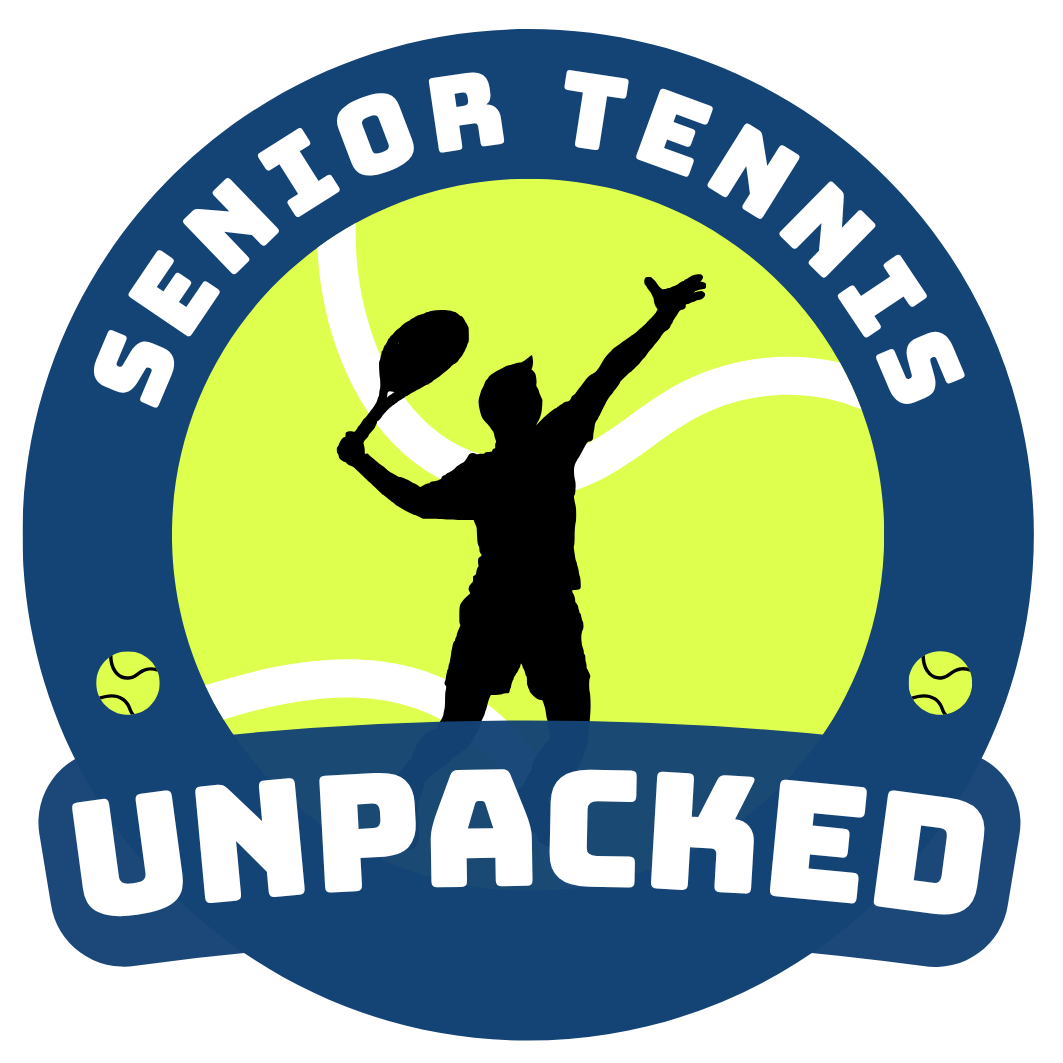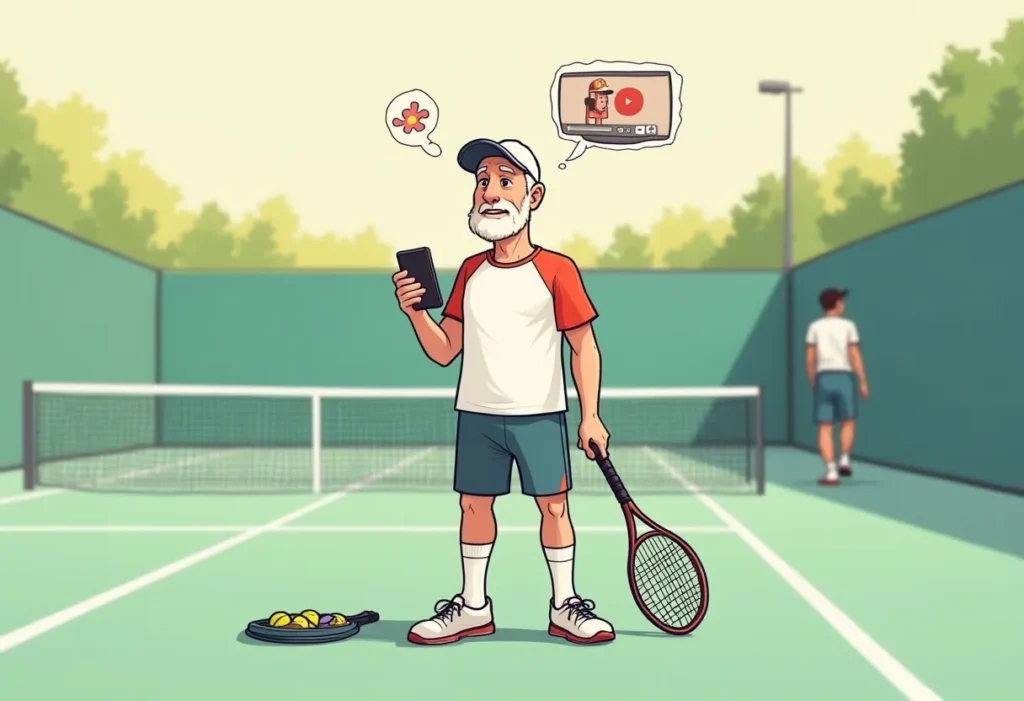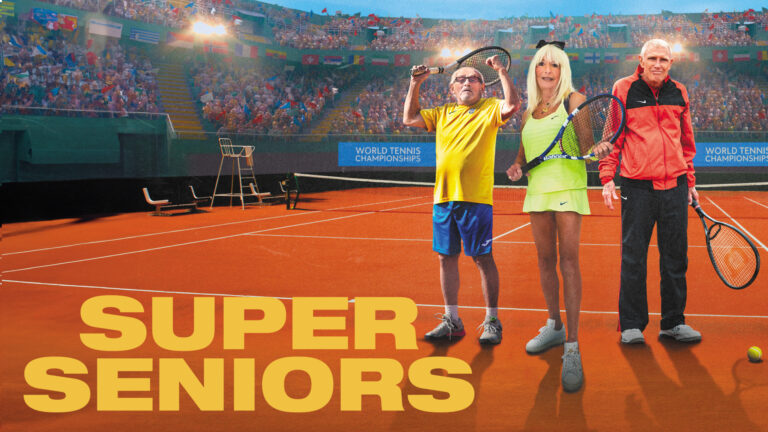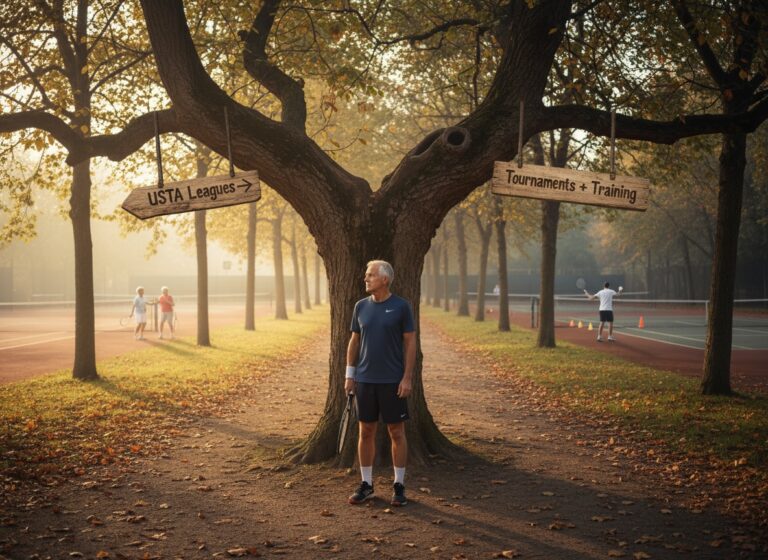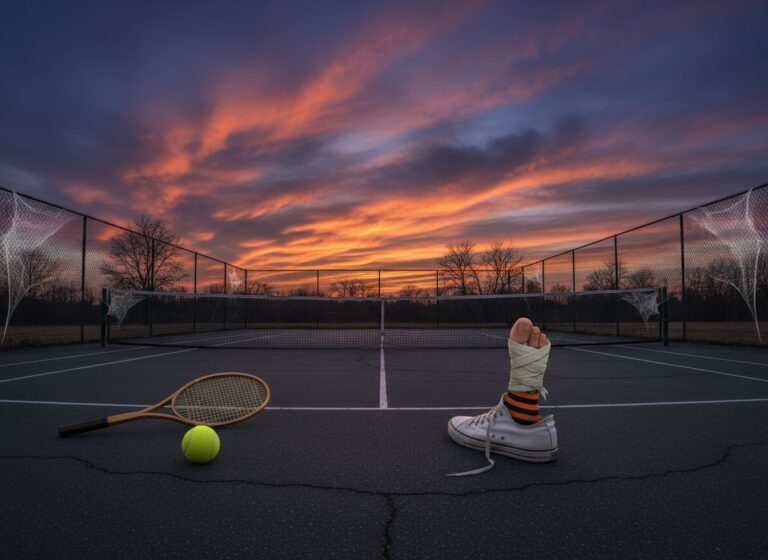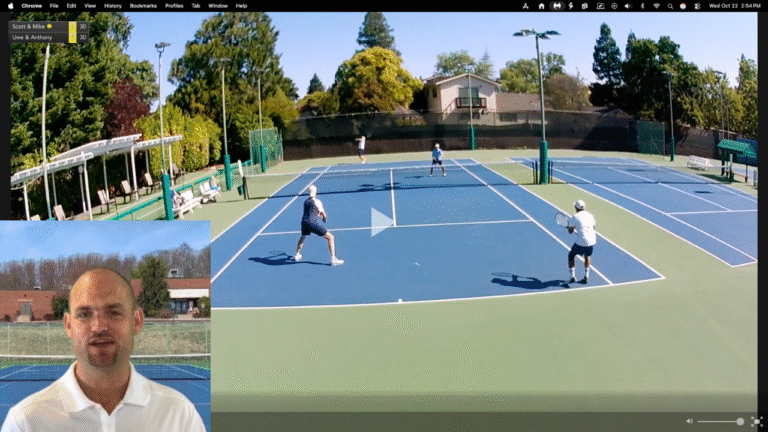Ever searched “forehand tennis tip” and come out the other side convinced you need a new racquet, new footwork, and possibly a new spine?
Yeah, me too.
YouTube is stuffed with coaches promising that your serve will “pop like the pros” and your backhand will “cut like a samurai sword.” Unfortunately, they forget to mention that most of us need 15 minutes to find our car keys, never mind our kinetic chain.
If you’re a senior player who’s spent more time watching slow-motion swing breakdowns than actually swinging, grab a chair. This one’s for you.
Welcome to Tennis Advice Overload
Online tennis advice is like an all-you-can-eat buffet that never closes. You start with a harmless search like “fix my backhand,” and three hours later, you’re knee-deep in elbow angles, hip rotation breakdowns, and a debate on whether your wrist should be relaxed, locked, or blessed by a local priest.
You’ll find:
- 5-second TikTok tips that promise to fix your serve while you reheat coffee.
- High-drama thumbnails with titles like “THE ONE DRILL FEDERER DOES DAILY (Not Really).”
- NASA-level lectures on racquet lag, shoe selection, and what to wear to Walmart.
- And my personal favorite: slow-mo swing analysis so detailed, you’d think you were studying for a biomechanics final.
Eventually, all that “help” turns into a fog of contradictions—and the only thing you’ve actually fixed is your YouTube algorithm.
Why Emulating the Pros Is a Trap
Let’s talk about the most dangerous phrase in senior tennis:
“If Federer can do it, so can I!”
I love Federer. I’d name a dog after him. But trying to move like him? That’s fantasy. That guy glides across the court like he’s on rails. I shuffle like I’m carrying groceries.
We see the pros ripping reverse forehands and think, “Maybe I should try that.” But unless your shoulders are insured and your joints were made in the last decade, that shot is more likely to land you in physical therapy than a championship match.
Remember:
- Federer doesn’t need ice after the first set.
- Djokovic isn’t Googling “quick stretches for senior hip tightness.”
- Your game isn’t supposed to look like theirs—it’s supposed to work for you.
Confession Time: I’ve Been There, Too
Look, I’m not above the fray here. I’ve been that guy—head full of quick fixes, dragging them onto the court like mismatched luggage.
“Relax the wrist,” one voice said. “Lock the wrist!” screamed another.
Some days I felt like I needed a coach just to sort through my coaching.
My YouTube playlist is so long my finger gets cramps just scrolling through it.
And here’s the twist: a lot of that advice is actually good. I’ve been fortunate to work with some truly incredible YouTube coaches—folks who know their stuff and genuinely want to help players like us get better without breaking down.
There’s value in the flood. But like social media—or a fast food burger—it works best in moderation. A few well-chosen tips can sharpen your game. An avalanche of advice? That’s just asking for a brain cramp and a sore lower back.
When Advice Becomes the Enemy: Paralysis by Analysis
You know what advice overload looks like in real time? It’s that moment right before a return when your brain goes:
“Don’t drop the racquet head—wait, drop it more—what did Coach Dan say again? Are my knees bent? Where’s my left foot supposed to be?”
And by the time you decide, the ball has already passed you—or worse, you shank it like a watermelon off a trampoline.
That’s paralysis by analysis, and it’s the silent killer of your flow. Instead of playing tennis, you’re playing instruction recall. Your brain turns into a whiteboard of “tips,” and your swing turns into a Frankenstein monster made of half-remembered cues.
Consistency Gets Crushed by Constant Tweaking
Every time you tweak your swing mid-match because of a new video tip, you’re pressing reset on all your muscle memory. It’s like changing radio stations after every note—you never hear the whole song.
Here’s how that shows up:
- You mistime the ball because your footwork is now “experimental.”
- Your confidence drops because your game doesn’t feel like yours anymore.
- You chase “the perfect swing” instead of trusting the one that’s already working 80% of the time.
It’s not just frustrating—it’s exhausting.
One Fix at a Time, Please
Here’s a radical idea: pick one thing to work on. Just one. And ignore everything else for a little while.
- Pick one skill (serve toss, backhand follow-through, split step—your choice).
- Give it time. A week. Two weeks. Let it marinate.
- Don’t touch the rest until that thing feels automatic.
Trying to overhaul your entire game every Saturday morning is how you end up with five unfinished swings and no confidence. Simplicity is your best doubles partner.
The Real Win? Confidence and Joy
There’s a lot of pressure to perform. But here’s the thing: your best tennis lives in the swings you own, not the ones you’re borrowing.
That backhand you’ve slowly made your own? That slice serve that wins you ugly points? Those are the real wins.
You start gaining confidence not by copying highlight reels but by trusting your instincts. Celebrate the moments that only matter to you:
- Keeping the ball in play one more time than last week.
- Hitting a clean shot that felt effortless.
- Laughing after a ridiculous shank and loving the game anyway.
- Why We’re Really Out Here
- Nobody signs up for 55+ league play to win Wimbledon. We’re here for the camaraderie, the court-side stories, the post-match muffins.
- Yes, improvement is great. But the real magic is in:
- Bragging that your drop shot worked (even if it was unintentional).
- Finding your people—the ones who laugh at your whiffs and cheer your net cords.
- Still loving the game enough to wake up and play again tomorrow.
- Final Serve
- Tennis is supposed to be fun—a satisfying thwack, a fist bump at the net, and maybe an extra cookie at the snack table.
- But soak up too much online advice and suddenly you’re stuck in your own head, trying to remember the elbow position of a man half your age with zero body fat.
- You don’t need twenty new techniques. You need a few habits that fit your game, your joints, and your sense of humor.
Filter the noise. Pick one thing. And swing like you mean it—even if your form wouldn’t make a coaching reel.
What about you?
What’s your experience been like chasing tennis greatness online?
Ever gone down the YouTube rabbit hole and come out more confused than when you started?
Have you found a tip that actually stuck—or one that sent you straight to the ibuprofen?
